What I Buy and Why
Danish Collector Jens Faurschou on the Most Impractical Artwork He Owns—It Involves Traditional Japanese Morning Exercises
He's just opened an exhibition in New York, showcasing Louise Bourgeois, Yoko Ono, and Miles Greenberg.
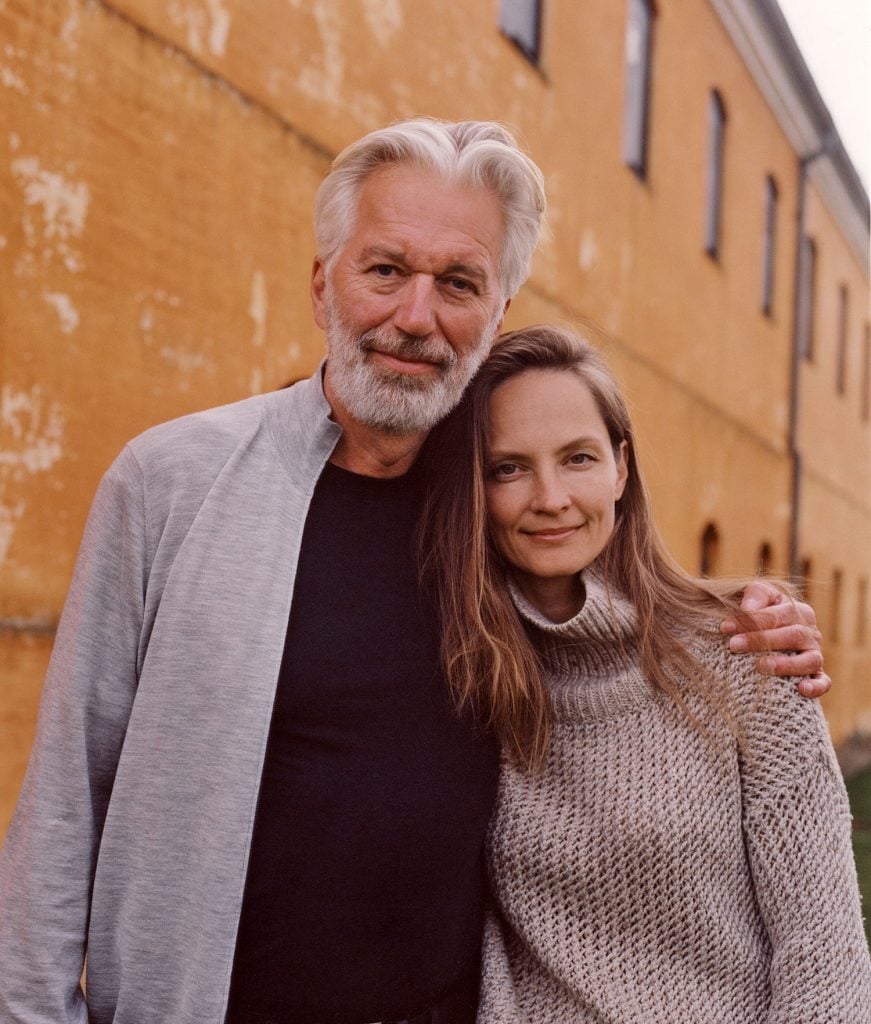
He's just opened an exhibition in New York, showcasing Louise Bourgeois, Yoko Ono, and Miles Greenberg.

Lee Carter

Jens Faurschou got his first taste of art in the 1980s, when, during college, he landed a job at an outfit that rented out artworks to companies around Copenhagen for display in their offices. Faurschou maintained the database, which, before the widespread use of computers, was run much like a library card catalog. In fact, the business was called the Art Library.
His appetite whetted, Faurschou set up his first gallery, Galleri Faurschou, in Copenhagen. In the early days, he traded mostly in Belgian artist Pierre Alechinsky, then he scored his big break by obtaining a Warhol (depicting Queen Margrethe II of Denmark), then a few Picassos and a couple of Mirós. He also became a leading purveyor of works by Edvard Munch. All the while, he reinvested in the gallery to promote younger Danish artists.
It wasn’t long before Faurschou cemented his place as a preeminent gallerist in Denmark, specializing in blue-chip modern and contemporary art. In 2007, he opened a second gallery in Beijing’s art district, 798; the inaugural show featured the works of Robert Rauschenberg, who was the first Western artist to exhibit at the National Art Museum in China back in 1985. Between them, the two galleries exhibited international artists Gerhard Richter, Gabriel Orozco, Danh Vo, Ai Weiwei, and Cai Guo-Qiang, as well as Danish artists Michael Kvium and Christian Lemmerz.
In 2011, Jens Faurschou made a pivot, setting up the philanthropic Faurschou Foundation and converting the Copenhagen and Beijing galleries to non-commercial exhibition spaces. The objective was to concentrate on collecting and exhibition-making while fostering greater cross-cultural dialogue between the East and West. In 2015, he also founded Copenhagen Contemporary, a museum space for the display of large-scale installations.
New York became the third city to get a Faurschou museum. In 2019, together with his wife Masha, he opened a cavernous ground-floor space in a former shoe factory in Greenpoint, Brooklyn. A year later, the foundation sold 30 works in a single-owner auction at Christie’s to continue offering free and publicly accessible exhibitions and programs in Copenhagen, Beijing, and now New York.
We caught up with Jens Faurschou about his collecting philosophy upon opening his latest exhibition in New York, “Embrace the World From Within” (through September 17), featuring works by Louise Bourgeois, Yoko Ono, and Miles Greenberg.
What was your first purchase?
Danish artist Balder Olrik’s painting Untitled from 1985, which we still own. It was around $500 at the time, and a work I would never like to sell. It just spoke to me immediately.
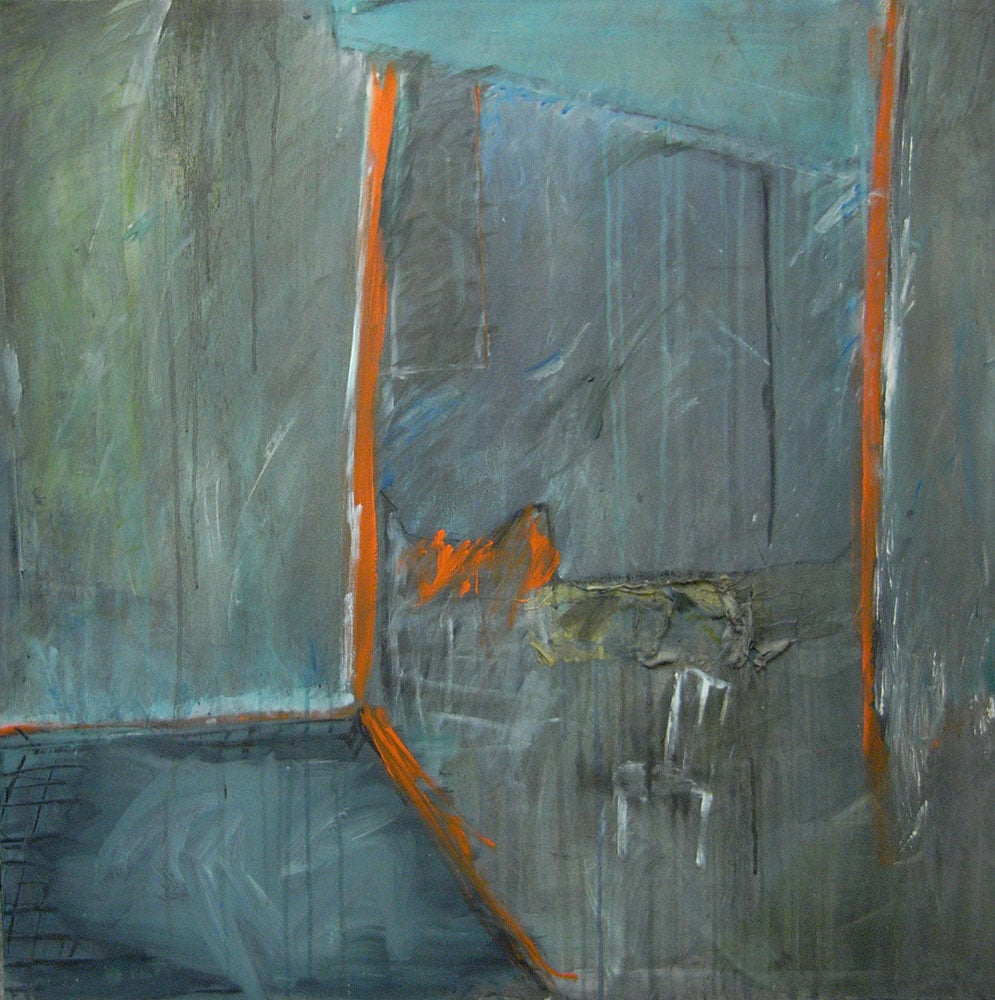
Balder Olrik, Untitled (1985). Courtesy of Jens Faurschou.
What was your most recent purchase?
We recently acquired works by two artists who caught my eye for different reasons. The late Ohio-based painter Curtis Barnes Sr., whom we presented in New York for the first time last fall. It was a special moment to be able to introduce this largely unknown body of work to new audiences.
Another recent purchase is Miles Greenberg’s performance piece The Embrace. It is on view in our show at Faurschou New York. It is the first performance piece we ever bought, and an incredibly powerful work.
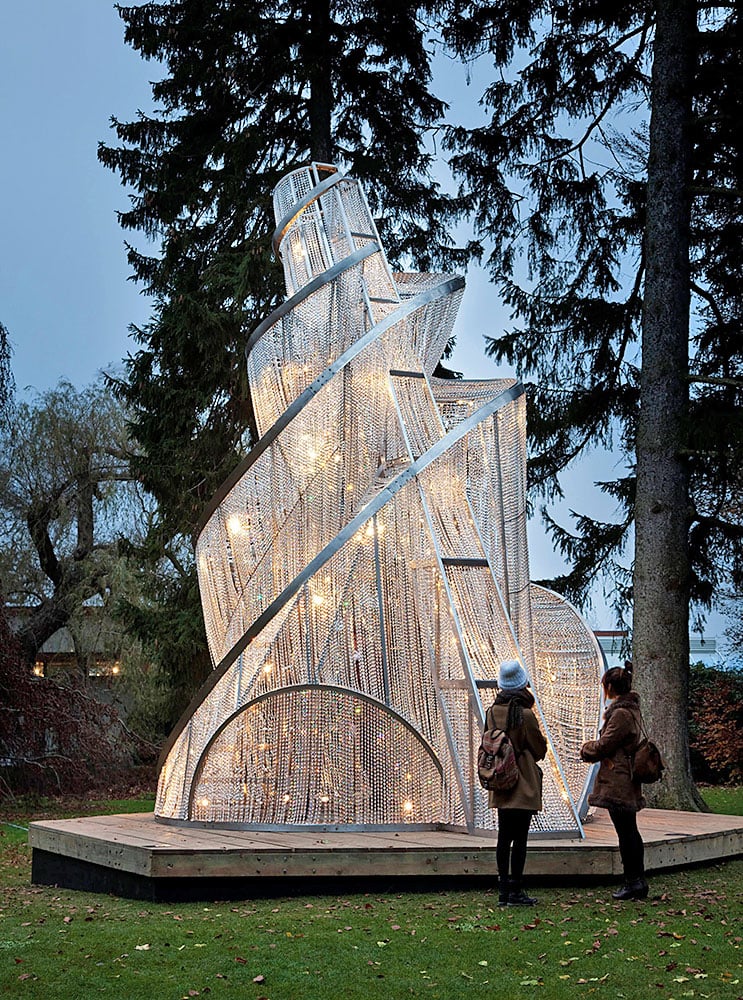
Ai Weiwei, Fountain of Light (2007). Steel and glass crystals on a wooden base. Courtesy of Jens Faurschou.
Tell us about a favorite work in your collection.
It is hard to single out just one, however Ai Weiwei holds a special place in our collection. Fountain of Light is visually powerful and is based on Tatlin’s Tower, a great comment on the failure of communism.
Shirin Neshat’s photographic work Speechless is outstanding. It has a directness yet refined pared-back poetry to it that I really appreciate. She is such a critically important feminist voice and an astute observer of power dynamics.
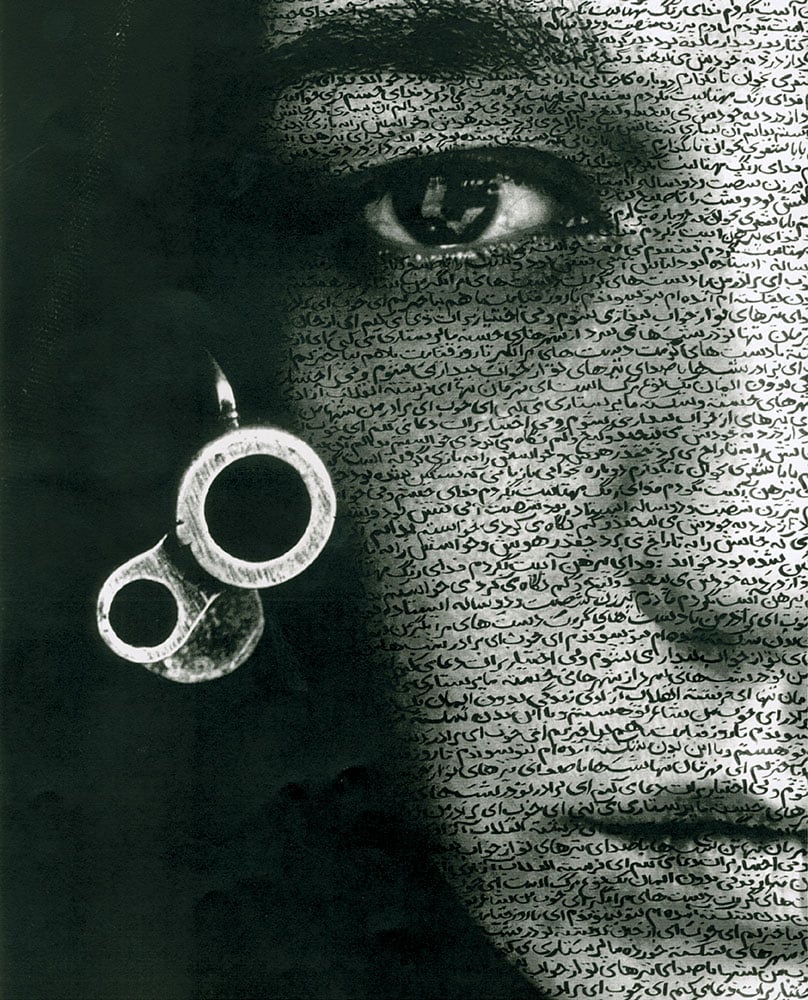
Shirin Neshat, Speechless (1996). Pen and ink over gelatin silver print. Courtesy of Jen Faurschou.
Doug Aitken’s stunning cast frosted resin work 3 Modern Figures (Don’t Forget to Breathe) from 2018 is another amazing piece, which we showed at Faurschou Beijing in 2019. I love Aitken’s ability to illuminate how our media-saturated culture impacts our lives and relationships.
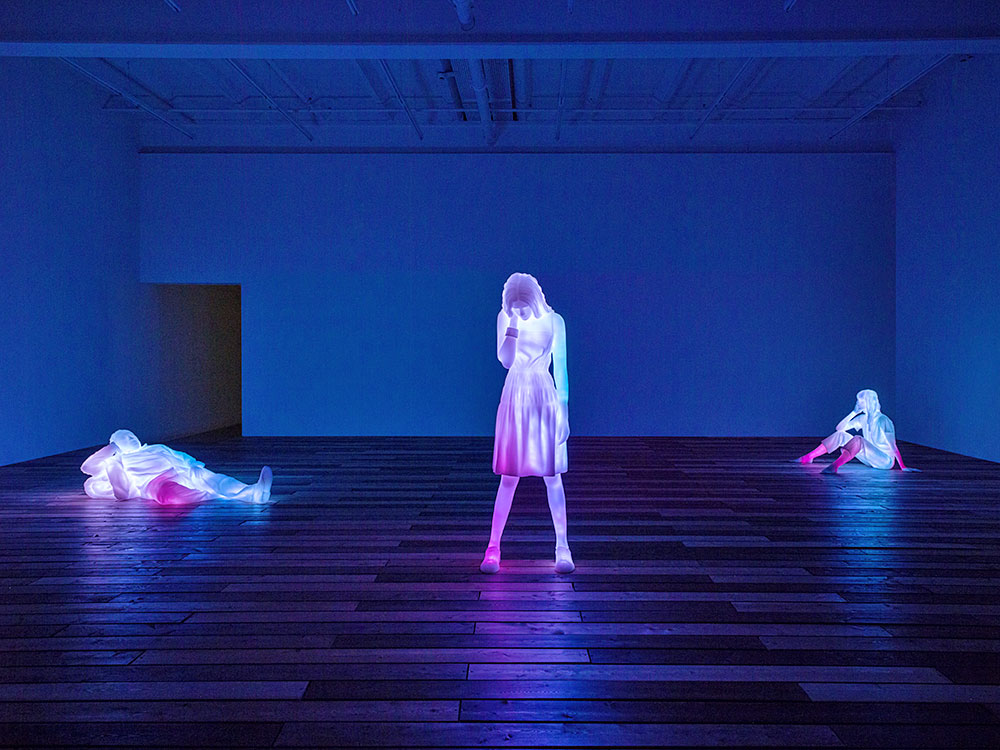
Doug Aitken, 3 Modern Figures (Don’t Forget to Breathe) (2018). Cast frosted resin, programmed LED lights and composition, audio speakers, and components. Courtesy of Jens Faurschou.
Which works or artists are you hoping to add to your collection this year?
The recent Lego Monet piece by Ai Weiwei on view at the Design Museum in London.
Also, we have collected works of Danish artist Jens Haaning since the early ’90s. The latest work of his, Take the Money and Run, is a 21st-century masterpiece. I wish we could own that one day. I would love to exhibit it with Rauschenberg’s Erase de Kooning.
What is the most expensive work of art that you own?
I can say that the most valuable work to me is a small portrait of my daughter made by Liu Xiaodong during a trip with the artist to Greenland in 2017.
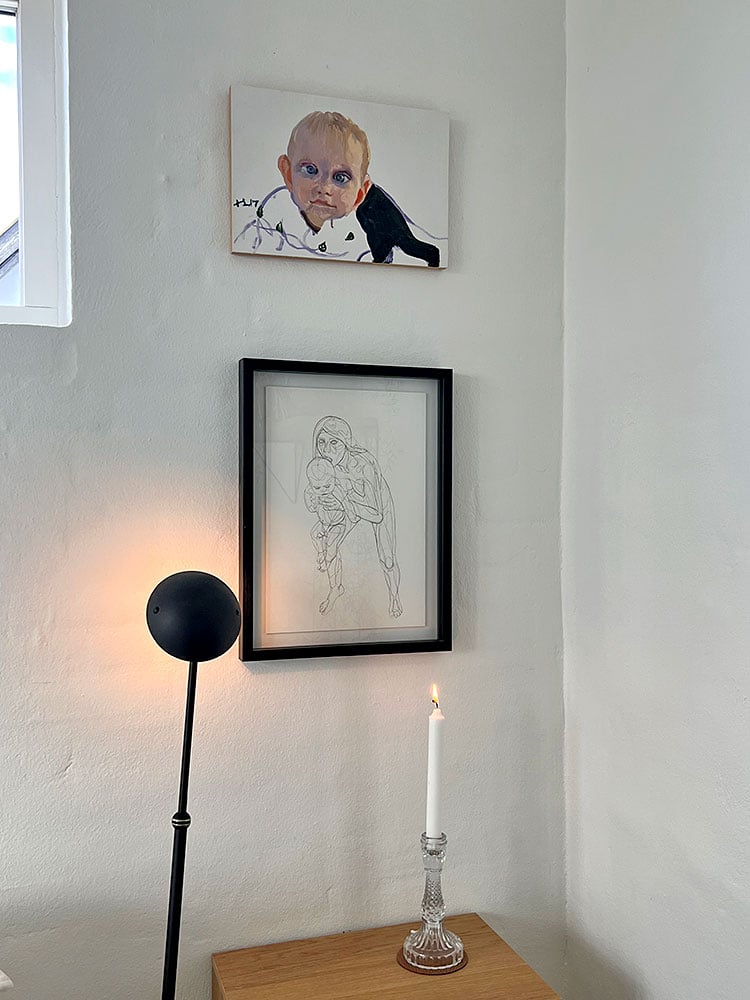
Liu Xiaodong’s portrait of Jens Faurschou’s daughter above a drawing by Ukrainian artist Julia Beliaeva. Courtesy of Jens Faurschou.
Where do you buy art most frequently?
I find myself more and more often purchasing art via the phone. When it comes to being physically present, Art Basel in Basel is my favorite art fair and the only place in the world where you get to witness the best of the world’s modern and contemporary art for sale in one location. We made some good purchases there over the years. We also buy from auctions. Most recently, we got Mark Tansey’s Bridge Over the Cartesian Gap from Christie’s sale of Paul Allen’s collection.
Is there a work you regret purchasing?
Never.
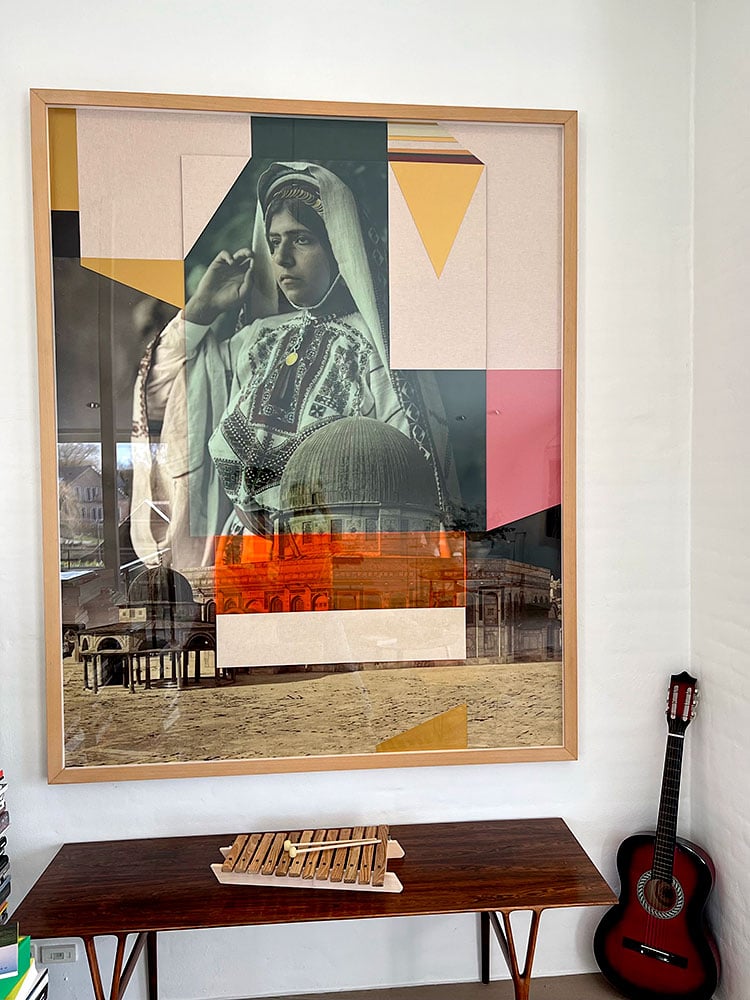
Hazem Harb, Power Does Not Defeat Memory (2017). Courtesy of Jens Faurschou.
What work do you have hanging above your sofa?
Not above the sofa, but in our living room we have a large-scale collage by Hazem Harb called Power Does Not Defeat Memory (2017).
What about in your bathroom?
A watercolor by Ernst Beyeler that I bought at a charity auction by the Beyeler Foundation. It’s a privilege to have the opportunity to buy a piece of art by a man I admired and had many good collaborations with.
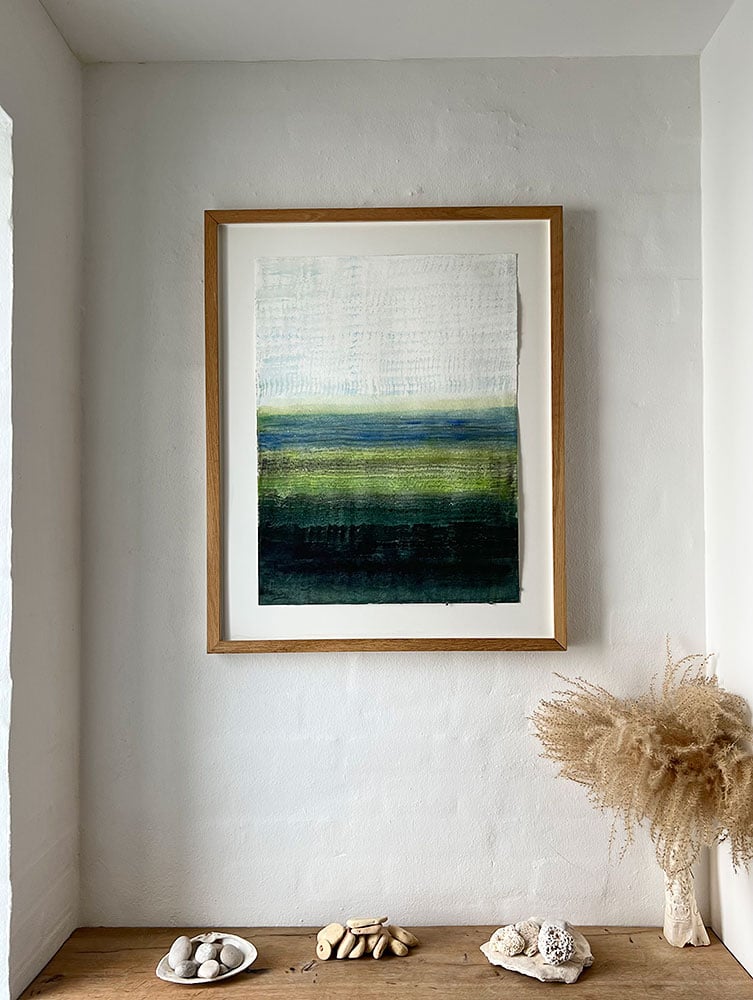
Watercolor by Ernst Beyeler. Courtesy of Jens Faurschou.
What is the most impractical work of art you own?
We do have an affinity for large-scale installations, which is wonderful and impractical at the same time. Cai Guo-Qiang’s Reflection – A Gift from Iwaki is one of them. It’s an excavated hull filled with broken porcelain from the small coastal village of Iwaki in Japan. You must have the original archaeological excavation team from Iwaki help you install it and you have to do a traditional Japanese exercise routine as a team every morning until the installation of the work is completed.
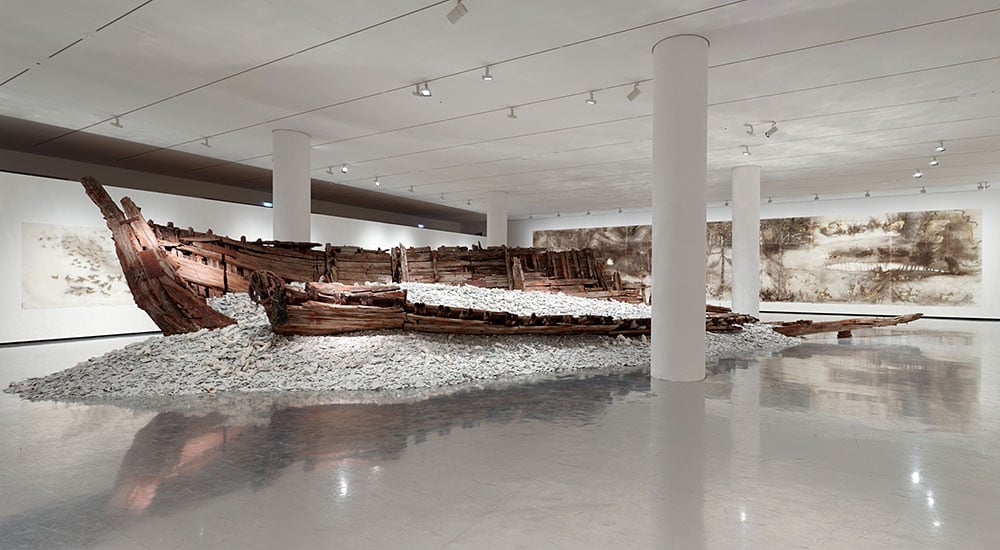
Cai Guo-Qiang, Reflection – A Gift from Iwaki (2004). Excavated wooden boat and porcelain.
What work do you wish you had bought when you had the chance?
That would be 152 gorgeous drawings of Yayoi Kusama from the late ’50s to the early ’60s, plus a few sculptures and paintings. In 1995, we had the chance to buy the works directly from the original owner. The works on paper were pristine, as if they were made a day before. They have been kept all these years in a drawer. The asking price was $250,000 and the economic environment was harsh. But I should have bought them then.
If you could steal one work of art without getting caught, what would it be?
Henri Matisse’s Portrait of Madame Matisse. The Green Line from SMK, the National Gallery of Denmark. If you haven’t seen it, add it to your must-see list when in Copenhagen. This painting will never travel due to its fragile state. I am glad we can visit it anytime we wish. Art like this you want to see again and again.